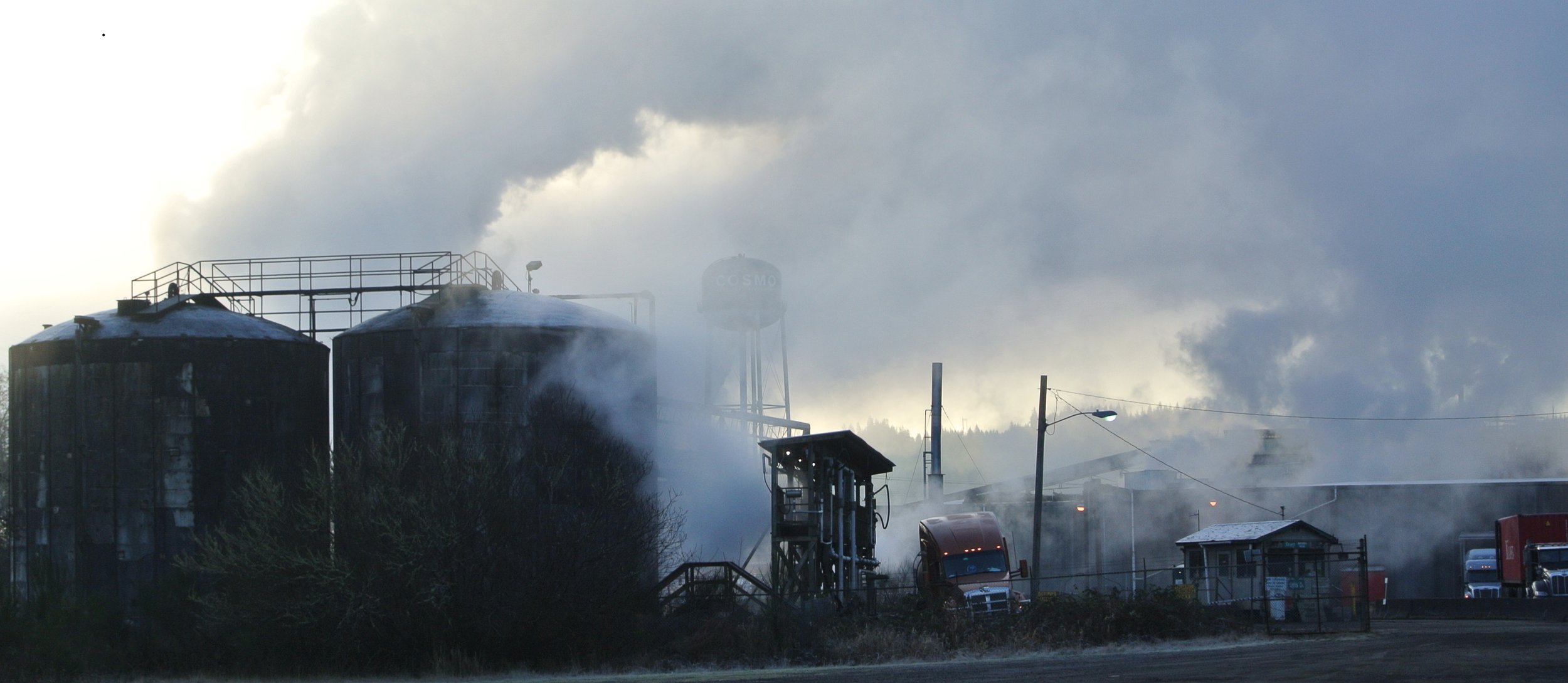PNWRE in Hoquiam
Trees to pellets for export.
PNWRE's proposed manufacturing plant in Hoquiam, WA would bring new noise and pollution impacts to Grays Harbor and the Chehalis Basin.
The company Pacific Northwest Renewable Energy, doing business as ‘PNWRE’, wants to build a half-million-ton/year wood pellet plant in Hoquiam, Grays Harbor County. PNWRE received state and federal grants totaling $500,000 for feasibility studies. PNWRE has leased a site from the Port of Grays Harbor in order to export their wood pellets to Asia.
Meanwhile, the proposed PNWRE site is less than a mile from Hoquiam High School, and even closer to the Grays Harbor National Wildlife Refuge, a significant stopover on the Pacific flyway for migratory birds. The National Wildlife Refuge brings many birding tourists to Grays Harbor County, particularly in the ‘shoulder seasons’ when birds are migrating. This makes for a longer tourism season, with significant economic benefits to Hoquiam and the county. PNWRE’s proposal puts that at risk.
In its SEPA and air discharge permit applications, PNWRE revealed that supplying the plant would require 128 diesel truckloads a day to bring logging slash and wood to the site. Emissions from diesel truck transport to the site are not considered by ORCAA, the regional air quality regulator. And despite this big increase in truck traffic, PNWRE received a SEPA determination that the plant would not create significant environmental impact.
Woody biomass feedstocks are about 50% water, but pellets need to be 10% water or less. A huge amount of energy is required to dry the materials. This phase of pellet production also creates high levels of Hazardous Air Pollutants (HAPs) and Volatile Organic Compounds (VOCs).
PNWRE is calling for four hammer mills to be used at the site. Hammer mills are very loud – as loud as a train whistle, but more of a banging sound. The plant is designed to run all night. The proximity of the plant to local schools could disrupt learning environments, both through elevated local pollution and the stressor of the constant hammering noise.
ORCAA also doesn’t regulate noise pollution. But amongst communities in the U.S. South dealing with the dust and haze caused by the pellet plant, noise pollution is an equally big concern. Noise is also a concern with respect to the National Wildlife Refuge because research shows that birds avoid areas characterized by excessive noise.
Both the drying and ‘densification’ (pellet-formation) stages of the production process release large quantities of Particulate Matter, a pollutant that causes grave harm to human lung function.
The pellets created from Washington forests would be shipped abroad and burned (co-fired) with coal by East Asian power companies. The long-distance transport of these materials creates shipping emissions, and some of those pollutants will stay in the port region. These shipping emissions are also not within ORCAA’s mandate to examine.
At a public meeting held in January 2024 in the City of Hoquiam about the air permit, no one spoke in favor of the pellet plant, and PNWRE didn’t even send a representative. Nonetheless ORCAA approved PNWRE’s air discharge permit.
But the controversy continues. Several organizations in Grays Harbor County assert that Pacific Northwest Renewable Energy (PNWRE) low-balled its pollution estimates and that the regional clean air agency, being unfamiliar with Big Biomass, accepted PNWRE’s data without question. These local groups have now appealed the air discharge permit up to the state level, where the case will be heard by the Washington Pollution Control Hearings Board. A hearing is planned for May 2025.
More information about the case, called Friends of Grays Harbor, Grays Harbor Audubon Society, Natural Resources Defense Council, and Twin Harbors Waterkeeper v. Olympic Region Clean Air Agency and City of Hoquiam, is available here.






